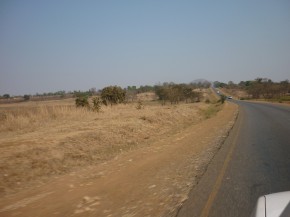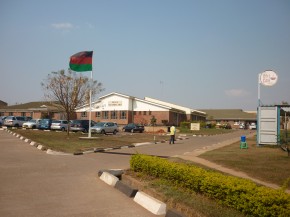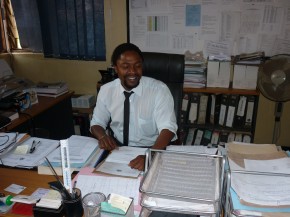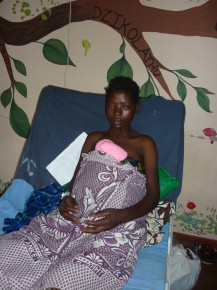
I got ahead of myself in my last blog and didn't reflect on my first impressions returning to Malawi after 20 years. My arrival at Lilongwe airport, and the drive to the capital highlighted a couple of major changes in Malawi over the last 20 years. The airport is clean and well organised, but thankfully the restrictions on travellers to Malawi that applied 20 years ago, when President Banda was still in power are now gone. I was a volunteer VSO doctor when I first went to Malawi in 1990 and the stories of long haired men having to have a hair cut in the airport before being allowed entry and of women needing to ensure skirts and dresses covered their knees were rife among the volunteers, with warnings in the guide books.
Malawi now has multi-party democracy, although the transition has not been without problems, (there is a good BBC chronology of events here). After a crisis in donor funding in 2010, international support is now back on track. The Malawi Young Pioneers, who used to act as the eyes and ears of the State in the early 1990s, are long gone, and there is now much greater press freedom and democratic debate. I recall having to lower my voice if talking politics in public space back in the early 90s – there was a real fear that conversations might be reported – all of that has now changed.
As I was driven from the airport in to Lilongwe, the effects of population pressure were very apparent. The city has expanded and is now much closer to the airport. The road in to Lilongwe, which used to be tree lined, is now largely denuded of trees, and the fields beyond have sparse tree cover of trees. Deforestation and on-going population pressure and demand for firewood, and wood for firing building bricks and drying tobacco (a major crop see here and here) represent a significant challenge.

I made a trip back to one of the hospitals where I trained in Lilongwe before taking up my post in Dowa, which was known then as Bottom Hospital, now renamed as Bwaila Hospital (a brief, slightly out of date description is here). The hospital, situated in the Old Town of Lilongwe has been transformed, thanks to funding through the Rose Project. New maternity services and a Lighthouse clinic for HIV care were opened in 2006.
It was in the Bottom Hospital that I learned how to perform caesarean sections – taught by clinical officers on a see one, do one, teach one basis - a stressful experience for a young doctor fresh to Africa.

Ruth and I were shown around the hospital by one of the new generation of Malawian doctors, who have helped to strengthen Malawi's health system.
For me a highlight of the visit was a trip to the labour ward. With the expansion of the maternal health facilities, the number of deliveries each year has rocketed, to about 18,000 births per year. The facilities are a considerable improvement on those of 20 years ago, but a look at the hospital statistics (a picture of the statistics posted up in the labour ward is included below) demonstrated that the challenges of late presentation, complications and resulting maternal and perinatal deaths remain huge.

The statistics for deliveries in January this year tell their own story. There were 1631 admissions, with 981 normal deliveries, 184 caesarean sections, 116 low birth weight babies (less than 2.5kg), 43 neonatal deaths and 25 still births and 3 maternal deaths.One of the techniques which has been introduced to reduce neonatal deaths - the risk of which can be increased by hypothermia, even in countries normally considered hot, is Kangaroo care - where the baby is strapped to the mother in order to stay warm from body heat. A low birth weight baby is seen with his mum below.

DFID's programmes in Malawi prioritise improving maternal, neonatal and child health. A significant programme of support to the health sector aims to contribute to national efforts to reduce this tragic toll of mortality, supporting the work of Malawi’s hard working health personnel.

Recent Comments